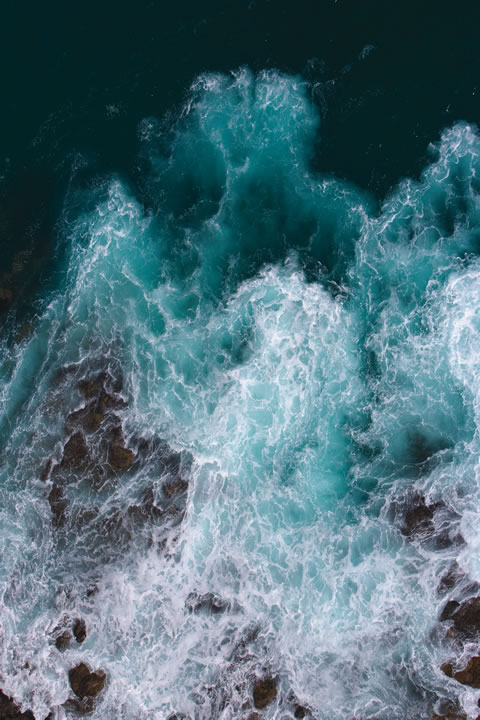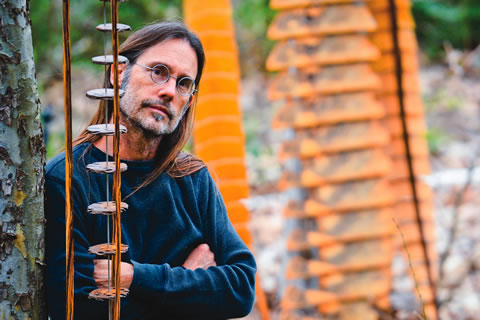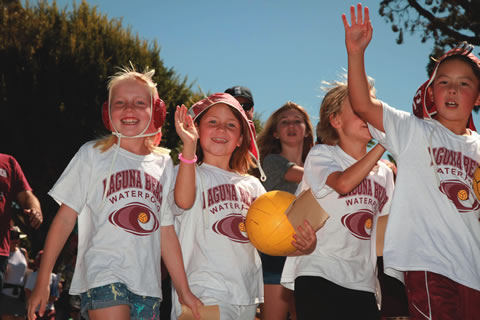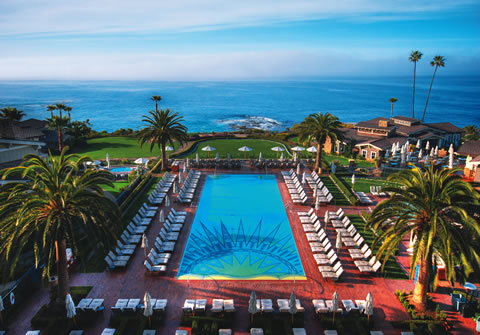Learn to take photos like a pro in Laguna Beach.
By Richard Chang

Photography and images surround us everywhere, from magazines and newspapers to computers, television and outdoor advertisements. Wedding and family pictures decorate millions of homes and offices; plus, snapping a photo with your smartphone or your hand-held digital camera is quick and convenient, making it easier than ever to add to the collection.
For those aiming to get a quality shot, some of Laguna’s most accomplished and talented photographers have provided insight on how to elevate your picture-taking skills to the next level.
But first, get to know your camera. Whether it’s an automatic point-and-shoot or a fancy, high-tech option with numerous settings and a powerful lens, read the manual and educate yourself about the equipment.
“Learn to see as the camera sees,” says Mark Chamberlain, a photographer who has lived in Laguna since 1970, and owner of the BC Space art gallery on Forest Avenue. “That’s a never-ending process. Without understanding and consciously using the camera’s tools, the best you can do is ‘take’ pictures rather than ‘make’ photographs. Learn to see effectively with the tools.”
Landscapes
Perhaps the easiest thing to do as an aspiring “serious” photographer, especially if you’re walking around scenic Laguna, is to shoot landscapes, seascapes and the great outdoors. Capture the beach, the rolling waves, the sunsets or the flowers blooming in Laguna Canyon, but avoid snapping photos aimlessly.

“See the world with a crop and a composition,” says Nancy Holly, a local who focuses her lens on wild horses in the great expanses of the American West. “It’s equally as important to have a vision, and not just clicking the shutter just for the sake of composition.”
It’s helpful to find a focal point; this could be anything from an intriguing rock formation to a uniquely shaped tree.
Photography is “really understanding what it is you’re looking at,” says Laguna Beach-based Tom Lamb, who shoots landscapes from airplanes and helicopters. “Framing in the camera is important. Photography is about seeing, not about the particular technique of the day. Now we’re in digital, but that doesn’t change the way we look at the world.”
Be ready for unexpected changes in the light and in the scene you want to shoot, as outdoor environments naturally change throughout the day. Morning and evening light tend to look the best. “It’s about the framing, the aspect ratio, where you are, and chasing light,” Tom adds. “You should be looking for stuff, rather than expecting the camera to do stuff for you. Concentrate on the image-making.”
Portraits
Everyone at some point has had his or her picture taken, and most people have shot photos of other people—at parties, memorable landmarks, weddings and other special events. But there are some key distinctions between amateur and excellent portraits.

“It’s like being a [movie] director,” says Rob Gage, a veteran photographer who has taken pictures for six decades. This summer marks his fifth consecutive (sixth overall) year as a Festival of Arts exhibitor. “I can really get along with people, and I like people, so I can make them comfortable in a relatively short period of time.”
Rob started his career capturing shots of automobiles for advertisements. His more recent work involves placing ballerinas in unexpected scenarios—next to concrete walls, alongside soiled mine and oil industry workers, and in the fields with fruit pickers. Rob’s latest series features ballerinas backstage at Pageant of the Masters, positioned next to mannequins, volunteers, costumes and sets.
“I love the incongruity with what I try to do,” he says. “I’m always thinking of new ways to visually illustrate, and that is always the challenge.”
Carrie Zeller, however, shoots weddings, fashion bloggers and families. She recently photographed seven artists for a 2015 campaign with Sawdust Art Festival, and regularly works with Laguna Beach resident Danielle White for photos to go with her style blog, dkwstyling.com.
“Show up with confidence and presence, and [convey that] you know what you’re doing,” Carrie says. “Fifty percent of my job is making my client comfortable. Be relatable. Everybody has an issue with something. They immediately tell me what their issue is. The answer is always, ‘Not a problem. You look fantastic. I can do that for you.’ ”
Carrie notes that she often approaches from an angle because straight on doesn’t always produce the best results. She also utilizes high vantage points, because people often look better from above—goodbye double chins, dark under-eye circles and crooked noses.
Make sure the light and the background are appropriate. Unless it’s an exceptionally pretty backdrop, you don’t want your background to compete with your subject or cause a distraction.
Action and Events

Photography at festivals, parades, sports and other live events is all about preparation and positioning. You should aim to have a good sense of what’s going to happen, when and where, and remember to prepare your shutter speeds beforehand.
“For me, I have to say I’m very focused—before I shoot—with all my settings,” Nancy says. “Once I get into a shoot, I use more of the left brain. I do have to prepare ahead of time to get the lion’s share of the settings straight.”
Mary Hurlbut, who has taken pictures since 1970 and has exhibited at Sawdust Art Festival for more than 30 years, makes a substantial portion of her living shooting at weddings, nonprofit fundraisers and public events, such as the annual Patriots Day Parade.
“Every event is different,” Mary says. “It all depends on the personality of my clients. More important is the prep time—making sure I really know what they want. I can take the most beautiful images, but if it isn’t what they need or wanted, they’re not going to be happy.”
If you’re documenting a sporting event, Mary says, you should know approximately what is going to happen at what juncture. “I like to do surf photography. I’ve been watching surfers my whole life, so I can anticipate where they’re going to be on the wave. I’m waiting for the cutback, waiting for the turn.”
To capture and freeze a moving subject, pan the camera at about the same speed relative to the featured person, animal or object. Don’t move your feet. The image should contain a sharp, focused subject against a blur of a background to represent motion.
One should also be open to the unexpected. “I don’t go into my shoots with an agenda,” Nancy says. “I try very much to be present with [the horses] and see what they’re offering me.”
Ultimately, photography is like other modes of communication. “It’s about storytelling,” Mary says. “It’s about making people show off what’s happening.”
There are numerous other types of photography, such as fashion, artistic, macro, architectural and abstract photography. Some people are still devoted to black-and-white film and prints and the old-fashioned process of developing in the darkroom, while computer programs such as Photoshop have revolutionized the image editing process.
To learn more about the medium, the photographers above suggest taking a class at nearby Saddleback College, University of California, Irvine, or Orange Coast College; YouTube tutorials and online courses abound as well. And, most of all, you learn by doing: practice, practice, practice. And don’t forget to have fun.
Three Essentials
While the technical aspects of photography can be difficult to master, these are a few critical variables that every pro knows intimately. Photographer Carrie Zeller advises going on hikes and concentrating on one of these during each. She also suggests accompanying a seasoned photographer out in the field to learn what she or he does while trying it yourself.
1. Aperture is the opening in the lens. Measured in “f-stops,” it controls the depth of field, or zone of acceptably sharp focus in a photograph.
2. Shutter speed regulates the amount of light allowed through the lens and how motion is depicted on film. You can freeze your subject if it is moving, or allow for some blur to offer a sense of motion.
3. Film speed determines how sensitive the film is to light. The higher the value, (e.g., 800 ISO) the “faster” the film, and the more sensitive it is. This also applies to sensors in digital cameras, which can be set to mimic the various speeds.
Get the Shot
Armed with some tips from the pros, it’s now time to test your skills. These picturesque spots around town double as postcard-worthy photo opportunities.

Heisler Park: The views of the coast from Heisler Park are breathtaking. Public art abounds at this cliff-top setting, which can make for some artsy frames. Plus, there’s a walkway that takes visitors from the park to Laguna Art Museum and all the way to Main Beach.
Crystal Cove State Park: Tucked between Laguna Beach and Newport Beach, Crystal Cove is a photographer’s dream. Capture the coast, the waves and the tide pools, the pelicans swooping down, and 2,400 acres of undeveloped woodland. (Amateur photographers can get away with shooting here for free; professionals must obtain a permit.)
Montage Laguna Beach and Treasure Island Park: The view from the balcony of Montage is stunning, with the crystalline pool in the foreground and the limitless ocean as a backdrop. A well-maintained walkway with interesting vegetation connects Montage to Treasure Island park and beach, which are pristine, beautiful and usually not too crowded.
Laguna Coast Wilderness Park: You can’t go wrong with the numerous trails that radiate from Laguna Canyon Road into the protected wilderness. Willow Canyon and Big Bend staging areas are good places to start. Be prepared to hike moderate to difficult trails for the best shots of nature and the coast.
Nix Nature Center: Located in Laguna Coast Wilderness Park, the center features interpretive exhibits and guides to the trails. A loop path circling a lake begins and ends at the center—it offers amazing nature shots. Get there early to avoid the crowds and capture the best light. (Park opens at 7 a.m.)
Main Beach: If you’re visiting from out of town, you’ll inevitably find yourself at Main Beach. There’s the boardwalk, the iconic 1929 lifeguard tower, the people playing basketball and volleyball, and the throngs on the sand in the water. The tide pools to the north make for worthwhile photos, though you probably won’t be alone. To avoid the crowds, try shooting from Hotel Laguna at sunset. On a clear day, you’ll probably catch a glimpse of Catalina Island in the distance.




